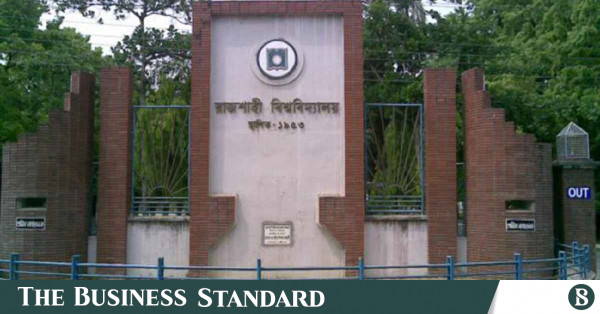The share of high school students who enroll directly in college continues to decline, according to data from the National Student Clearinghouse Research Center. According to the finalized version of the High School Benchmarks report released last month, college enrollment by high school class of 2020 showed an “unprecedented” drop of between four and 10 percentage points depending on high school category.
The outlook for the 2021 class does not look much better; Preliminary data from the clearinghouse shows freshman enrollment down 2.7% from last fall – 13.1% since 2019 – in all sectors except institutions private four-year nonprofits, which were up 2.5% from last fall. Overall, post-secondary enrollment for fall 2021 is 2.6% below the 2020 level, for a total decline of 5.8% since 2019.
The continued losses of enrollment among traditional college-aged students, aged 18 to 24, remain “of concern,” the center noted.
Some state boards are feeling the pressure. In Arizona, a new post-secondary education outcomes report from the Arizona Board of Regents found that of the 73,400 high school students who graduated in 2020, less than half (46.3 percent) enrolled in college, a sharp drop from 2019, when 52.9% of the school’s graduates did so.
“Arizona is not moving in the right direction for high school graduates going to college and this problem has been exacerbated by the pandemic,” the report said. “This is a concern because education level is a primary factor that impacts the quality of Arizona’s job market and the state’s ability to compete regionally and nationally for employers and workers. well paying jobs. “
The decline in enrollment primarily affected Arizona’s two-year schools, which were down 6.1 percentage points year-over-year; the four-year enrollment rate has held “relatively stable” at 28.3% of high school graduates, according to the report.
Data from the University of Wisconsin system shows that there were 1,710 fewer new full-time equivalent students in 2020 compared to 2019. In Ohio, the number of public high school graduates enrolling in an institution audience peaked in 2018 at 51,075 students. and declined 4% to 48,451 in 2020. The Kansas Board of Regents shows that enrollment for first-time students has fallen from 16% in fall 2019 to 14% in fall 2021.
According to the latest High School Benchmarks report, the decline in enrollment among high school graduates in 2020 disproportionately affected students in low-income schools, who enrolled at a rate of 49%; by comparison, 65 percent of high-income high school graduates immediately enrolled in university.
In the poorest schools, the immediate enrollment rate fell from 55% to 45% between 2019 and 2020, according to the report.
Anthony Carnevale, director of the Georgetown University Center on Education and the Workforce, noted that some low-income students may be deterred from attending college by the physical risks of COVID-19, while others have struggled to find employment during the pandemic, leaving them unable to pay for college.
“For most of the people in the bottom half of the family income distribution, you can’t make your way to college. It’s too expensive, â€Carnevale said. “But you need a job. And so, when jobs go missing, it makes studies fail, which is unique with COVID. “
Carnevale said applications for the top 200 colleges in the United States have actually increased; the decline in enrollment mainly affects two-year colleges and non-selective four-year colleges, where low-income and minority students are concentrated.
The High School Benchmarks report found that students in high schools with fewer minority students were 12 percentage points more likely to immediately enroll in college than those in high schools with higher minority populations – 64% against 52%.
Will Patch, senior enrollment knowledge manager at Niche, a company that connects people to institutions, neighborhoods and workplaces, said his organization’s surveys have shown that Indigenous students, first-generation students and low-income students were more likely than other groups to say they did not intend to go to university. Students who identified as non-binary or some other gender were about three times more likely to say they did not enroll in college than students who identified as male or female, perhaps because these students had less family or financial support, he said.
“What I’m reconstructing here from these polls is that the groups that were already struggling are also the ones that are dropping out of college,†Patch said. “I think there are those hopes and those crosses of fingers that they will register later. But I think anyone who’s worked with students long enough, if a student doesn’t enroll that first year, they’re much less likely to come back later.
Patch said students are very hesitant to enroll due to evolving COVID-19 protocols, especially now, with many institutions starting their spring semesters remotely due to the surge of Omicron variants. Misinformation is also playing a role in declining college enrollment, he noted; some students are confused about the evolution of SAT and ACT requirements, and others fail to cast a wide enough net when applying, often sticking to institutions with high notoriety.
Only 20 percent of students surveyed said they had considered attending community college, Patch said, which he finds odd.
“If students have this financial instability, they might not be quite sure what they want to do next,†he said. “It looks like this should be another big time for community colleges, where students can get their start… So it’s surprising to me that so few have said they are interested in this.
Community college enrollment rates continue to fall across the country, forcing some institutions to cut operating budgets for fear of greater economic repercussions.
Patch said many high school graduates are more interested in jobs at restaurants and other establishments where the pay is $ 15 an hour with benefits.
“Before I got into higher education I was a high school teacher and $ 15 an hour is about what I got paid,†Patch said. “If I’m going to work at Taco Bell, I could earn as much as I could teach. And one of them doesn’t require a four-year degree. So how do you compete with this? How do you attract people to these much needed professions – social workers, teachers – which are not really valued financially in the same way? “
Carnevale noted that with more high school graduates choosing to go straight to work, the United States could face a skills shortage in the future, which employers and politicians will need to address.
“There is an ongoing debate that once the economy recovers there will be skills shortages everywhere because people are not going to go to college,” Carnevale said. “And because the retirement rate has increased dramatically with COVID, with the baby boomers, the story of the skills shortage may be real.”
Pre-pandemic data from his center showed that 22% of jobs held by workers without a high school diploma were “good jobs,” he said, meaning they pay at least 45,000. $ per year at mid-career; in contrast, 40 percent of jobs held by workers with a high school diploma and 48 percent of jobs held by workers with a college diploma but no diploma met this criterion.
Carnevale predicted that by 2031 there will likely be around 35 million job openings, of which 30 percent will be available to high school graduates, 30 percent will be medium-skilled jobs that require more than a degree high school but less than a bachelor’s degree. and 40 percent will require a bachelor’s or graduate degree.
Patch noted that the wave of high school graduates choosing work over university could lead to a surge in 15 or 20 years for more adult education, attracting an influx of people who have technical training and can occupy lower paid positions but are not. ready for higher level jobs.
“I really hope the students return to college as soon as possible,†Patch said. “Hopefully we will have these part-time paths or other options to bring students back in a way that will help them thrive. I think there is a long way to go, but I just hope it happens quickly, rather than waiting for it to become a problem. “
 Xing Wu
Xing Wu



